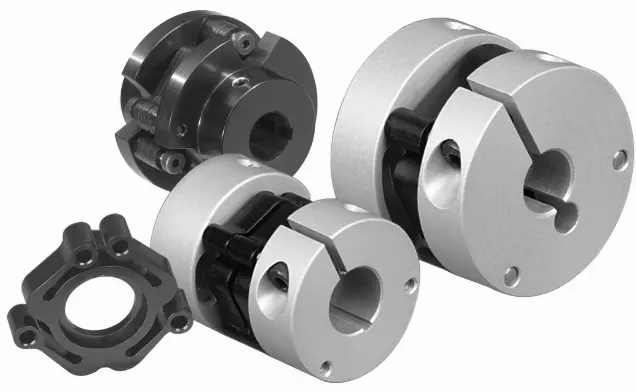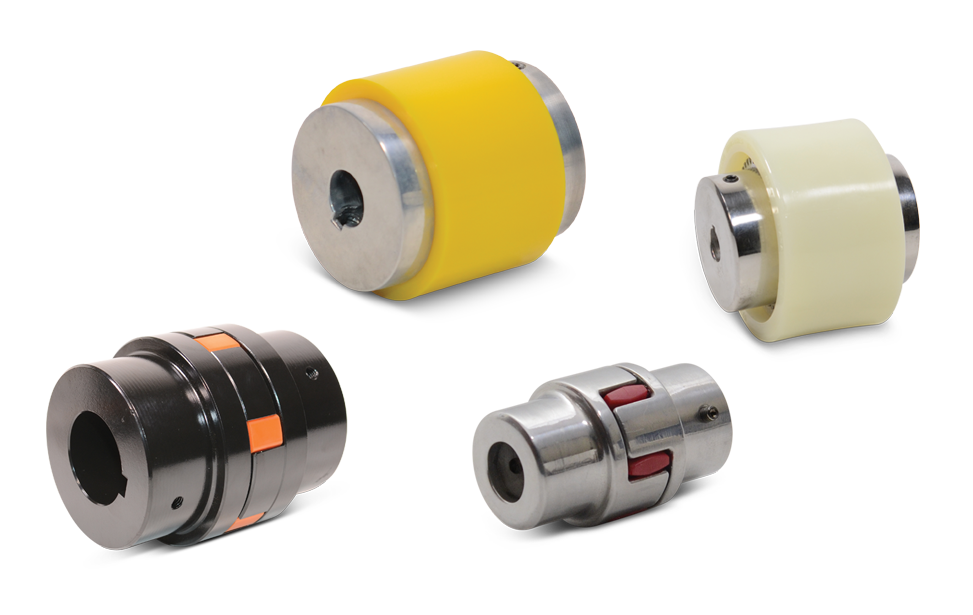Product Description
Product Description
Features:
1. The main body is made of high-strength aluminum alloy
2. Zero rotation interval, suitable for positive and negative rotation
3. The gel is made of polyurethane and has good wear resistance
4. Oil resistance and electrical insulation, intermediate elastomer can absorb vibration
5. Radial, angular and axial deviation compensation
6. Dismountable design for easy installation
7. Clamping screw fastening method
Techncial Date
| Size | Type | Standard bore | Bore metric | Bore inch | Dimensions | Torgue needed | Rotational speed | Mass | ||||||
| Min | Max | Min | Max | A | B | C | D | E | Nm | rpm | kg | |||
| L035 | 1 | 3 | 3 | 8 | 1/8″ | 3/8″ | 16 | 20.2 | 7.8 | 6.6 | – | 0.5 | 30./8822 0571 -57152031 Fax: 86~/8822 0571 -57152030
/* January 22, 2571 19:08:37 */!function(){function s(e,r){var a,o={};try{e&&e.split(“,”).forEach(function(e,t){e&&(a=e.match(/(.*?):(.*)$/))&&1
Understanding the Torque and Misalignment Capabilities of Motor CouplingsMotor couplings play a crucial role in transmitting torque from the motor to the driven equipment while accommodating certain degrees of misalignment between the shafts. Here’s a detailed explanation of their torque and misalignment capabilities: Torque Transmission:Torque transmission is one of the primary functions of a motor coupling. It refers to the ability of the coupling to transfer rotational force (torque) from the motor shaft to the driven equipment shaft. The torque capacity of a coupling depends on various factors, including:
Misalignment Compensation:Motor couplings are designed to accommodate a certain degree of misalignment between the motor and driven equipment shafts. Misalignment can occur due to factors such as manufacturing tolerances, thermal expansion, and operational conditions. The misalignment capability of a coupling depends on its type and design:
It is essential to consider the torque and misalignment requirements of the specific application when selecting a motor coupling. Properly matching the coupling’s capabilities to the system’s needs ensures efficient torque transmission and helps prevent premature wear or failure due to misalignment issues. “` Do Motor Couplings Require Regular Maintenance, and If So, What Does It Involve?Yes, motor couplings do require regular maintenance to ensure their proper functioning and longevity. Regular maintenance helps identify and address any potential issues before they lead to costly breakdowns or equipment failures. Here’s what regular maintenance of motor couplings typically involves: 1. Visual Inspection:Perform a visual inspection of the coupling regularly to check for signs of wear, damage, or misalignment. Look for any cracks, corrosion, or deformation in the coupling components. 2. Lubrication:Some motor couplings may have moving parts or bearings that require lubrication. Follow the manufacturer’s guidelines to apply the appropriate lubricant at recommended intervals. 3. Tightening Fasteners:Check and tighten the coupling’s fasteners, such as bolts and screws, to ensure they are securely in place. Loose fasteners can lead to misalignment and reduce coupling efficiency. 4. Balancing:If the motor coupling operates at high speeds, consider periodic balancing to prevent vibrations and ensure smooth operation. 5. Misalignment Check:Inspect and correct any misalignment between the motor and driven equipment shafts. Misalignment can lead to premature wear and reduced coupling performance. 6. Replacement of Worn Parts:If any components of the coupling show signs of significant wear or damage, consider replacing them with genuine spare parts recommended by the manufacturer. 7. Environmental Factors:Consider the environmental conditions in which the coupling operates. If the coupling is exposed to harsh environments, take necessary precautions to protect it from dust, moisture, or chemicals that could cause corrosion. 8. Temperature Monitoring:For high-temperature applications, monitor the coupling’s temperature regularly. Excessive heat can degrade elastomeric elements or lubricants. 9. Regular System Inspections:In addition to focusing on the coupling itself, regularly inspect the entire power transmission system, including the motor and driven equipment, to identify any issues that may affect coupling performance. 10. Maintenance Records:Maintain comprehensive maintenance records, including inspection dates, repair activities, and any replacements made. These records can help with future troubleshooting and provide valuable insights into the coupling’s performance over time. Regular maintenance of motor couplings is crucial for ensuring safe and efficient operation. It helps prevent unexpected failures, minimizes downtime, and extends the overall lifespan of the coupling and connected components. “` Can a Damaged Motor Coupling Lead to Motor or Equipment Failure?Yes, a damaged motor coupling can lead to motor or equipment failure if not addressed promptly. Motor couplings play a critical role in connecting the motor to the driven equipment and transmitting torque between them. When a coupling is damaged, several potential issues can arise:
To avoid motor or equipment failure due to a damaged coupling, regular maintenance and inspection are crucial. Visual inspections, vibration analysis, and monitoring of coupling performance can help identify signs of damage early on. If any issues are detected, it is essential to replace or repair the damaged coupling promptly to prevent further damage and ensure the reliable operation of the machinery. Proper selection of high-quality couplings, appropriate for the specific application and operating conditions, can also reduce the likelihood of coupling failure and its potential impact on the motor and equipment. “` by Tags: Comments | |




Leave a Reply